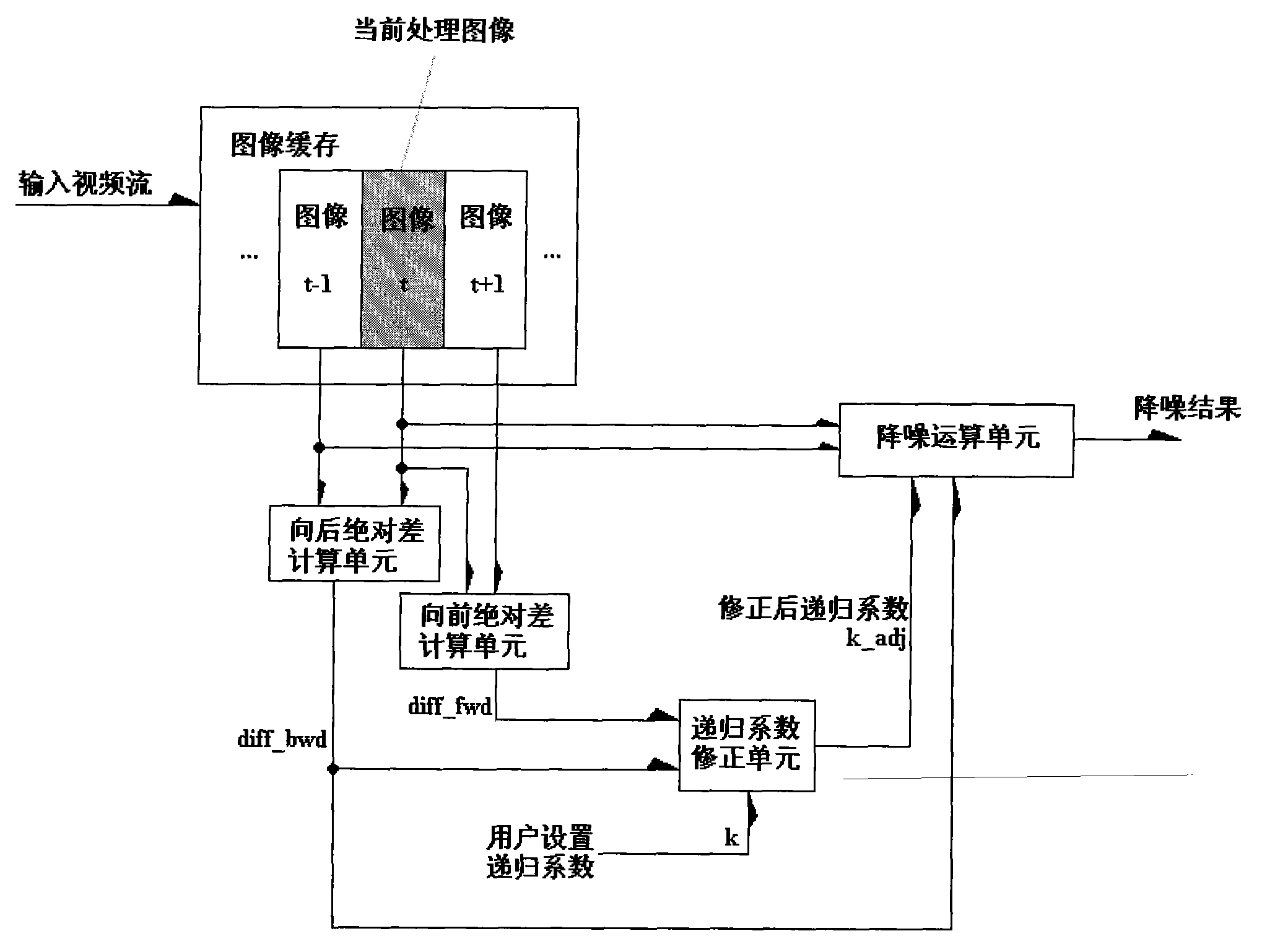Method and system for adaptively recursively denoising digital video signal
An adaptive recursive, digital video technology, applied to TV system components, color TV components, TVs, etc., can solve problems such as application difficulties, and achieve the effect of eliminating smearing
- Summary
- Abstract
- Description
- Claims
- Application Information
AI Technical Summary
Problems solved by technology
Method used
Image
Examples
Embodiment Construction
[0014] The following is based on figure 1 , give a preferred embodiment of the present invention, and give a detailed description, so that the functions and characteristics of the present invention can be better understood.
[0015] figure 1 is a block diagram of the adaptive recursive noise reduction system of the present invention, describing the process of the adaptive recursive noise reduction in the present invention. It should be noted here that for progressive input video streams figure 1 The images in are input continuous progressive video images, such as image t-1, image t and image t+1 represent three consecutive progressive video images. However, for an interlaced input video stream figure 1 The images in correspond to continuous interlaced video images that are both odd or even fields. Odd-field images and even-field images are transmitted alternately in an interlaced input video stream, so the data to be stored in the image buffer will be larger than figure 1...
PUM
 Login to View More
Login to View More Abstract
Description
Claims
Application Information
 Login to View More
Login to View More - R&D
- Intellectual Property
- Life Sciences
- Materials
- Tech Scout
- Unparalleled Data Quality
- Higher Quality Content
- 60% Fewer Hallucinations
Browse by: Latest US Patents, China's latest patents, Technical Efficacy Thesaurus, Application Domain, Technology Topic, Popular Technical Reports.
© 2025 PatSnap. All rights reserved.Legal|Privacy policy|Modern Slavery Act Transparency Statement|Sitemap|About US| Contact US: help@patsnap.com



